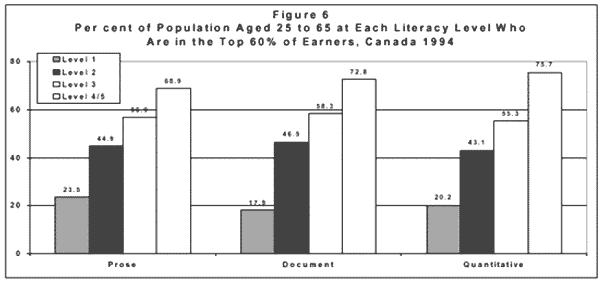
The IALS findings make it clear that it is inadvisable to set a single standard of literacy for Canada. Any society can accommodate a range of literacy levels. Literacy skill requirements and performance vary significantly by occupations and industries; some occupations need high level skills and others reflect requirements for intermediate and even basic skills. For example, clerical workers appear to function well when they tested in the middle range of the literacy scale. Professionals, on the other hand, need the higher levels required to be "literate" at their jobs.
A comparison of high-demand occupations to those in decline indicates that Canadian workers in future will require high literacy skills. Industries that have experienced growth are the ones whose employees have relatively high levels of skills; those industries in decline are characterized by workers with lower skills.
Adults' Readiness to Learn
In the majority of countries surveyed, around 40% of the population participates in adult education and training. In each country, however, there are still large groups that are not involved. Even so, adult training is on the rise influenced, in part, by the job market which has recognized the increased importance of adult education and training as an investment. In all countries, roughly half of the participants in adult education and training attend an employer-supported activity. The data shows, however, that adult education and training programmes are less likely to involve those with low literacy skills, the very people who need them the most. Given that literacy is a prerequisite for an adult's readiness to engage in learning, the lack of strong literacy skills can be a critical factor that deters these adults from participating in training. The rates of participation in adult education and training increase gradually with increasing levels of literacy skill.